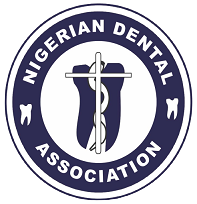Teaching, learning and usage of Rubber Dam in Clinical Practice
DOI:
https://doi.org/10.61172/ndj.v23i2.25Keywords:
learning, rubber dam, post graduation, teachingAbstract
Introduction: The teaching, learning and practice of rubber dam use are incorporated into dental schools' curricula all over the world. Its usage in operative dentistry and endodontics is highly recommended. Its merits include moisture control and soft tissue retraction leading to better access and visualization of teeth. It also enhances cooperation among children. However, previous studies had shown very low usage of rubber dam by post doctoral dentists. The aim of this study was to determine the effects of teaching, learning and usage of rubber dam during undergraduate studies on the frequency of use of rubber dam post-graduation.
Materials and methods: This survey was a descriptive cross-sectional study carried out amongst dentists working with private, federal and state governments' hospitals in Lagos State. A convenient simple random sampling was used to select the participants. Newly structured self administered questionnaires were used. They were mostly closed with a few open ended questions. The questionnaires contained fifteen questions based on biodata, knowledge and usage of rubber dam in clinical practices. These were fully completed and returned by consented respondents. Data collected were analyzed by Statisitical Package for Social Science (SPSS) 20 edition. Univariate analysis was done using frequency, percentages, and chart while bivariate analysis was carried out by cross tabulation of categorical variables with Chi-square, p-value ≤0.05 was accepted as statistically significant.
Results: The total number of respondents was 135 consisting of 50 males and 85 females. Of the 135 respondents, only 8(5.9%) routinely used rubber dam, which is in contrast to 120 (88.9%) and 127(94.1%) that had high knowledge on rubber dam and its merits respectively. Reasons for non-usage included non availability of rubber dam kit in hospital 120(94.5%) and lack of skills 11(8.7%). Test of association showed that knowledge of rubber dam system was significantly affected by age of respondents (p-value =0.001), designation (p-value=0.008) and years of experience (p-value= 0.010). In addition, use of rubber dam was significantly different based on respondents designation.
Conclusion: The usage of rubber dam amongst dentists working with the federal and state governments in Lagos State was very low in spite of their high knowledge on its merits. Therefore, there is the need to develop a culture of rubber dam use in clinical practice amongst dentists.
Downloads
Downloads
Published
Issue
Section
License
Copyright (c) 2023 Nigerian Dental Journal

This work is licensed under a Creative Commons Attribution 4.0 International License.
Open Access Statement
- We became fully Open Access since January 2023.
- Our new and archived materials are available free of charge on open basis and under a Creative Commons license as stated below.
Copyright statement
Copyright © 1999 The authors. This work, Nigerian Dental Journal by Nigerian Dental Association is licensed under Creative Commons Attribution 4.0 International License.

